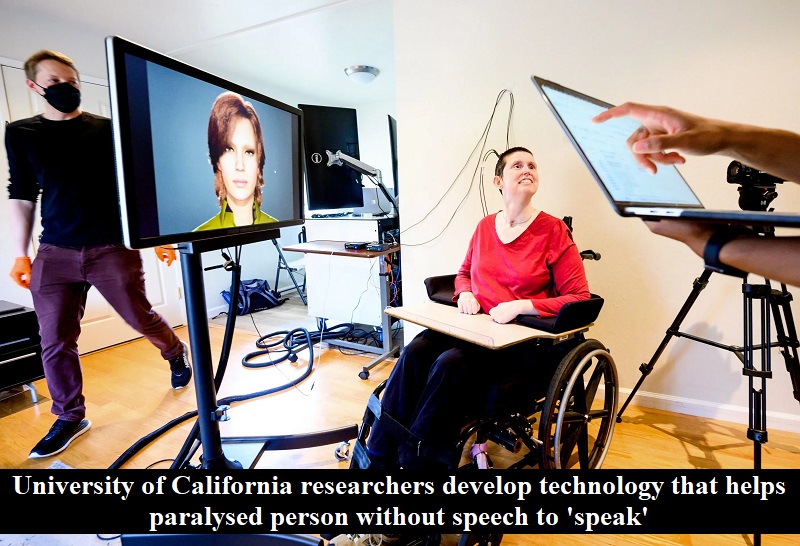
The loss of the ability to communicate verbally and convey thoughts can be an incredibly stifling experience. When coupled with a serious impairment like paralysis, which may have caused the communication deficit in the first place, the resulting situation becomes one that nobody would desire. Regrettably, there are numerous individuals who find themselves in this unfortunate predicament.
In a development that could significantly assist such patients and their families, researchers at the University of California have devised a technological solution that enables a paralyzed individual without speech to effectively ‘speak.’
The researchers have harnessed the capabilities of a digital avatar, which not only delivers speech on behalf of the individual but also mimics facial expressions such as smiles, frowns, and expressions of surprise.
The underlying mechanism by which the avatar generates speech is rooted in the function of a Brain-Computer Interface (BCI). This technology incorporates minuscule electrodes that are surgically implanted on the surface of the patient’s brain. These electrodes are adept at capturing electrical signals originating from the brain region associated with speech and facial movements. These signals are subsequently translated into speech and facial expressions by the digital avatar.
In simpler terms, one could explain this technology as the avatar comprehending the paralyzed person’s intended words through the person’s thought processes.
Professor Edward Chang, who led the research at the University of California, San Francisco (UCSF), elucidated, “Our goal is to restore a full, embodied way of communicating, which is really the most natural way for us to talk with others. These advancements bring us much closer to making this a real solution for patients.” His statement was reported by The Guardian.
The focal patient in this study is a 47-year-old named Ann. She reportedly experienced a brainstem stroke that led to severe paralysis lasting over 18 years.
Researchers implanted a thin sheet equipped with 253 electrodes onto Ann’s brain surface. This implant was strategically placed over a region crucial for speech functions. The electrodes captured brain signals that typically coordinate actions like tongue movement, jaw motion, facial expressions, and control over the larynx.
Ann collaborated with the research team to train an artificial intelligence (AI) algorithm, thereby customizing it to interpret her unique brain signals. This process facilitated the computer’s learning of 39 distinct sounds. Subsequently, a language model similar to ChatGPT was employed to ‘translate’ Ann’s brain signals into coherent sentences.

Post Your Comments